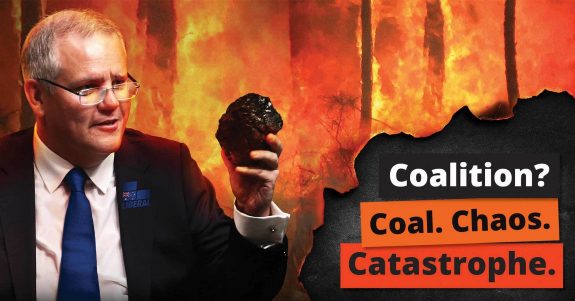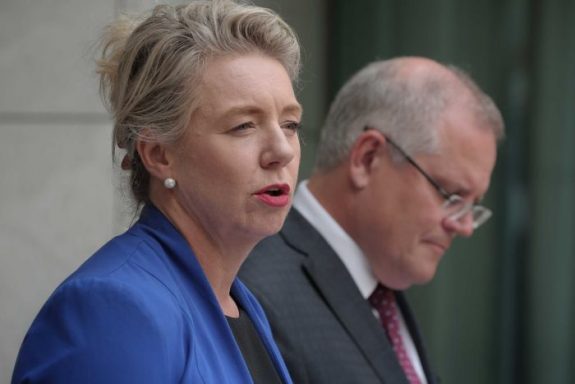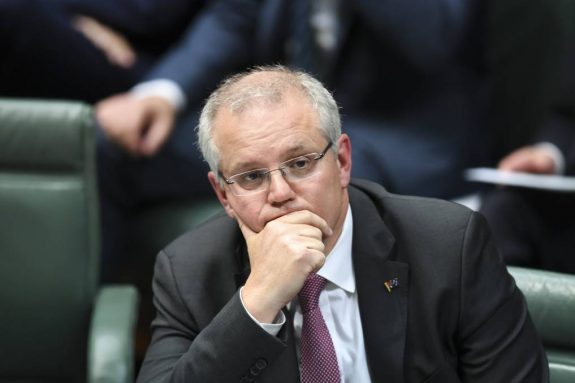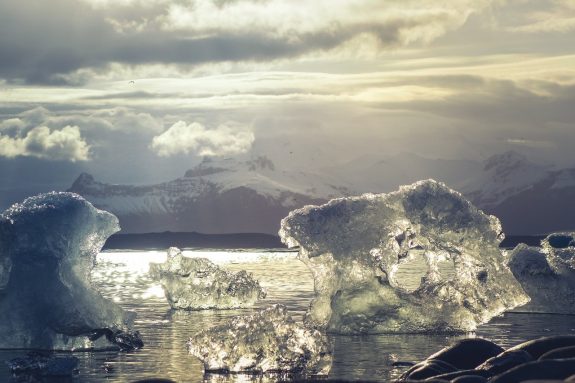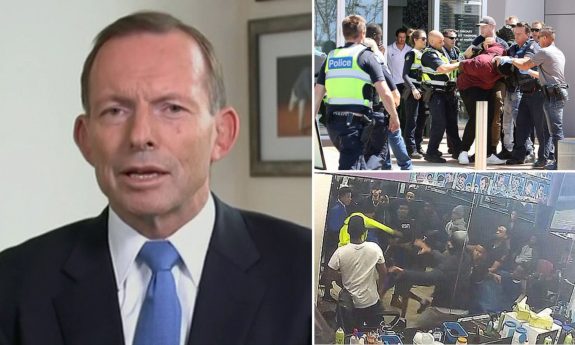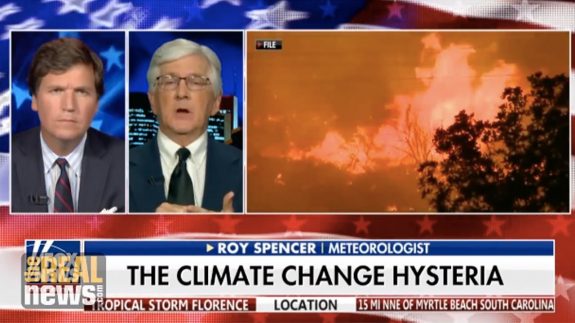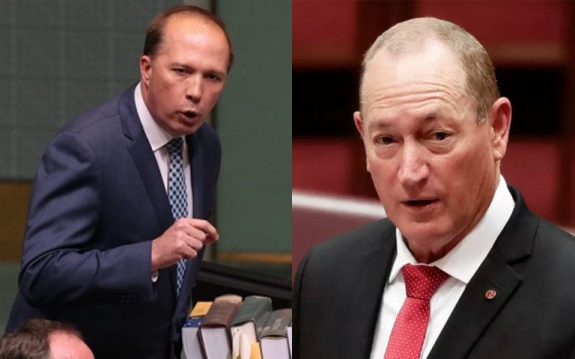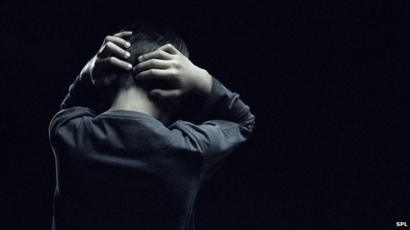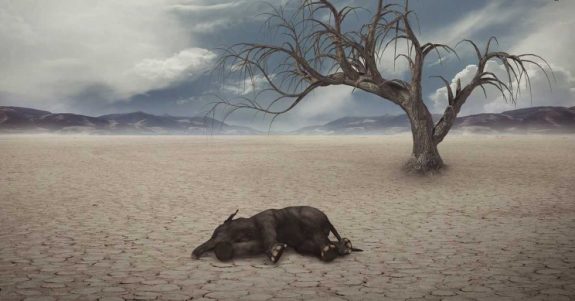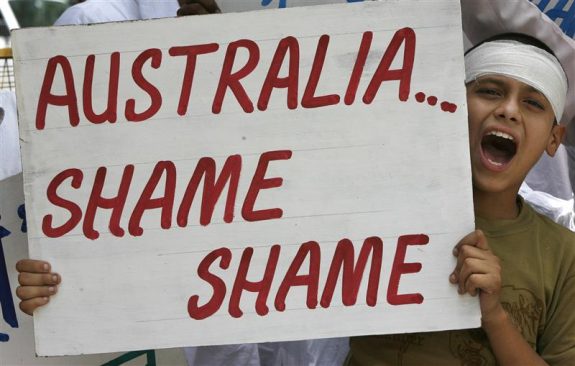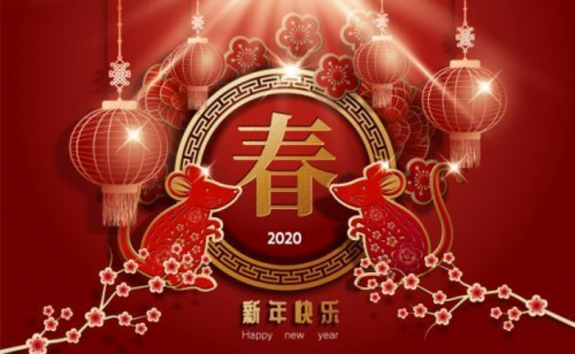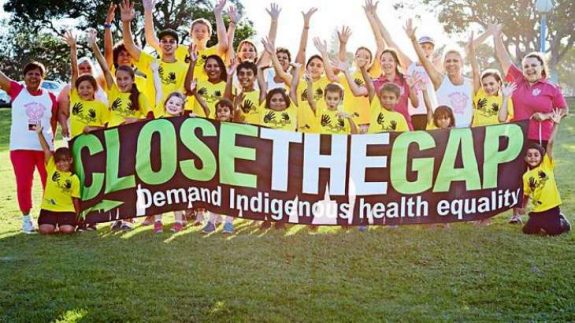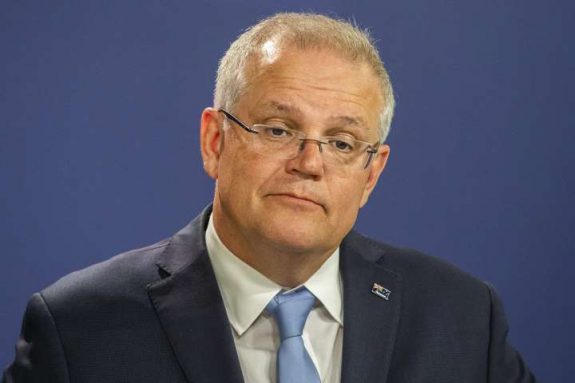Comedy without art (part 7)
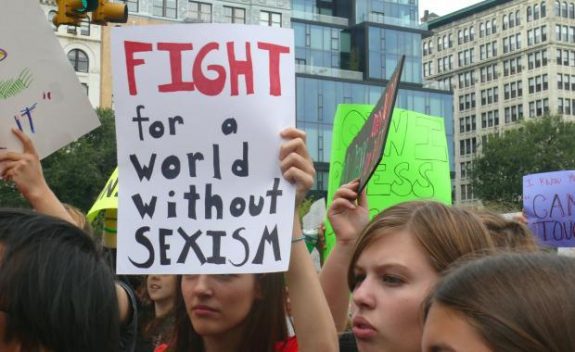
By Dr George Venturini
In June 2015 Dr. Tim Soutphommasane, Race Discrimination Commissioner at the Australian Human Rights Commission, invited members of the academic and business community to join him in leading a change. The Working Group on Cultural Diversity and Inclusive Leadership was formed. Dr. Soutphommasane in the chair, the Working Group consisted of the Australian Human Rights Commission, the University of Sydney Business School, Westpac, PwC Australia and Telstra. The group is responsible for authoring Leading for Change: A blueprint for cultural diversity and inclusive leadership, Sydney, July 2016).
In Leading for change the Working Group observed:
“We found a bleak story for multicultural Australia.
In corporate Australia, the ranks of senior leaders remain overwhelmingly dominated by those of Anglo-Celtic and European background. Among the 201 chief executives of ASX 200 companies, 77 per cent have an Anglo-Celtic background and 18 per cent have a European background. Only 10 chief executives – or five per cent – have a non-European background. None of the 201 chief executives has an Indigenous background.
Such findings are corroborated by Diversity Council Australia (DCA). According to DCA, while about 32 per cent of the general Australian population are culturally diverse (i.e. have a ‘non-Anglo-Celtic’ background), only 22 per cent of chief executives fall into this category. There was particularly low representation of those who have an Asian background. (Footnote 7. Diversity Council of Australia, Capitalising on Culture: A Study of the Cultural Origins of ASX200 Business Leaders, Diversity Council of Australia: Sydney, 2013).
Similar patterns prevail elsewhere. In the Australian parliament, 79 per cent of the 226 elected members in the House of Representatives and the Senate have an Anglo‑Celtic background. Sixteen per cent have a European background. Those who have a non-European background make up less than four per cent of the total, while those who have an Indigenous background comprise just under two per cent. (Footnote 8. These figures are based on members of the Senate and the House of Representatives in the 44th Parliament, as at 31/05/2016).
Cultural diversity is even lower within the ranks of the federal ministry. Of the 42 members of the ministry, 86 per cent have an Anglo-Celtic background, 12 per cent have a European background; there is one member of the ministry who has an Indigenous background (two per cent), though none who has a non-European background (Footnote 9. The shadow ministry, as of 31/05/2016, fares better. Of the 46 members of the shadow ministry, 34 have an Anglo-Celtic background (74 per cent), 8 have a European (non-Anglo-Celtic) background (17 per cent), 4 have a non-European background (9 per cent) and none have an Indigenous background).
In the Australian public service, diversity is also dramatically under-represented. Of the 124 heads of federal and state departments, it is notable that there are only two who have a non‑European background (less than two per cent) and one who has an Indigenous background (less than one per cent). Eighty-two per cent of departmental heads have an Anglo-Celtic background, with 15 per cent having a European background. (The shadow ministry, as of 31/05/2016, fares better. Of the 46 members of the shadow ministry, 34 have an Anglo-Celtic background (74 per cent), 8 have a European (non-Anglo-Celtic) background (17 per cent), 4 have a non-European background (9 per cent) and none have an Indigenous background.)
Among our universities, it is much the same – and in some respects worse. All of the 40 university vice-chancellors either have an Anglo-Celtic background (85 per cent) or a European background (15 per cent). There is not one vice-chancellor who has either an Indigenous or non-European background.” (Leading for change, at pp. 6,7).
On 6 August 2018, in a final address entitled “Confronting the return of race politics”, Dr. Soutphommasane, then the outgoing Race Discrimination Commissioner, condemned what he calls “the monetisation of racism.” This is what he meant: “Sections of a fracturing media industry, under the strain of technological disruption, seem to be using racism as part of their business model.” So he told his audience at the Whitlam Institute at Western Sydney University.
He explained:
“Faced with competition from a proliferation of news and entertainment sources, some media outlets are using racial controversies to grab attention …”
“Just last week,” he said, “News Corp columnist Andrew Bolt argued that we are seeing a ‘tidal wave of immigration’ overwhelming Australia – that Jews, Indians and Chinese were forming ethnic ‘colonies’ across the country. Clearly, we are seeing a challenge to the non-discriminatory immigration program that Australia has conducted since the end of the White Australia policy.”
This was, he said, all part of a resurgent appeal to racism, directed to political ends, which has unfortunately coincided with his five years as race discrimination commissioner.
“Shortly after I started [in August 2013], the Abbott government was elected, and it had promised in the election campaign to change the Racial Discrimination Act.” … “That was the first challenge I had: to defend this legislation.” he said.
Twice the government tried to water down section 18C of the Act, first under the leadership of Tony Abbott in 2014 and then under Malcolm Turnbull in 2017. And twice it failed, opposed in the Senate and by an extraordinary coalition of ethnic groups, as well as the large majority of Australians – 78 to 88 per cent, according to polls.
“We had absolute solidarity,” Dr. Soutphommasane said. “Between Aboriginal communities and ethnic and multicultural communities. This has been a fight that has galvanised disparate groups who otherwise would not be working together. When do Jews and Arabs work together? But they have been in lockstep the whole way through the five years I’ve been in this job.”
As Dr. Soutphommasane said in his Whitlam Institute speech, the race debate has not been shut down. Not when “The Australian has devoted hundreds of thousands of words to attacking the Racial Discrimination Act; when there are regular beat-ups on race in the Herald Sun and The Daily Telegraph; when nocturnal panels on Sky News endlessly berate multicultural political correctness; when Pauline Hanson makes regular appearances on Sunrise and Today…From broadsheet to tabloid newspapers, from breakfast to night-time viewing on television, and from backbenchers to the most senior members of government, there’s plenty of race-baiting happening.”
Dr. Soutphommasane expressed his fear that the situation will deteriorate.
“I’ve spoken about race politics and sections of the media trying to cash in on racism, but I believe there will be further attempts to weaken the institutional architecture we have established against discrimination,” said Soutphommasane.
“[The present Attorney-General, Christian Porter] has said that he has a desire to rename or refocus this statutory office. That can only be done if you change the terms of the Act. It’s hard to predict what’s going to happen, but I do find Porter’s statements troubling. What he has said about racism suggests he is not a friend of racial equality and not a friend of the Racial Discrimination Act.”
And the reason? It is the triumph of identity politics’ as practiced by the conservative side in Australia right now. “It’s an identity politics defined by cultural anger, racial resentment and a desire to put minorities in their place. You see that in the 18C debate, through debates about multiculturalism – you’re seeing an attempt to assert a more muscular, ‘Anglo-Celtic’ form of national identity. [Emphasis added]
“I would imagine many of those who have been most enthusiastic about repealing section 18C would also feel very strongly about punishing any university that does not agree to host the Ramsay Centre for Western Civilisation. This is the ideological universe in which some people live. They genuinely believe that 18C, the Ramsay Centre, privatisation of the A.B.C., represent the most pressing political issues of the day. … This should worry mainstream citizens in our society because it shows there is a section of the political class that is significantly removed from reality.”
Dr. Soutphommasane remarked that the appeals to racism made by some powerful sections of the media and politicians in this country have intensified since Donald Trump was elected in America.
And that suggests something else: that the elevation of race as an issue also serves as a valuable distraction for conservative forces whose real agenda is economic.
While Trump’s electoral base – disproportionately older, white, ill-educated, underpaid and male – was diverted by Muslim travel bans, walls to keep out Mexican “rapists”, outrage at black footballers “taking a knee” and sundry other race-oriented distractions, Trump and his party made like bandits, pushing through tax cuts that gave 80 per cent of the benefit to 1 per cent of the population.
Perhaps the true agenda here is more akin to class warfare: the manipulation of the base instincts of the mob to the benefit of one racial group, in particular, rich white folks.
That is what Dt. Southphommasane meant by “the monetisation of racism.” (M. Seccombe, ‘Who is making money out of racism?’, The Saturday Paper, 11 August 2018).
As Ms. Michelle Grattan, Professorial Fellow at the University of Canberra, commented: “Sections of a fracturing media industry, under the strain of technological disruption, seem to be using racism as part of their business model. … Faced with competition from a proliferation of news and entertainment sources, some media outlets are using racial controversies to grab attention – as a means of clinging on to their audiences.”
[Dr. Southphommasane] accuses some media outlets of fawning on far-right political commentators from North America.
“These avatars of white nationalism are typically lauded as ‘alt-right showmen’ or ‘alt-right provocateurs’. They are fawned upon and given sympathetic platforms to spread their messages of hate and division. With this kind of licence, it is no surprise to find far-right groups being emboldened like never before.
It’s got to the point where commentators on national television can tell people to go back to where they came from on air, and not experience any sanction from their network. Commentators can entertain fantasies on radio about running over a Muslim writer, with barely a slap on the wrist.
Commentators with histories of inciting racism and of running foul of laws against racial discrimination have the audacity to label anti-racist speech as forms of ‘race baiting’.” (M. Grattan, ‘Soutphommasane says sections of media exploit racism to make money,’ theconversation.com, 6 August 2018).
There are other matters which should deeply concern the Australian community: ‘Sexism is rife in Australia, largest survey of its kind finds,’ screamed the Special Broadcasting Service on 3 November 2018.
The results of a survey commissioned for documentary Is Australia Sexist? have been called a “huge wake-up call” for Australia.
The majority of young women in Australia have faced sexism, according to the country’s largest-ever survey on the topic.
The survey, conducted by Macquarie University in partnership with an S.B.S. documentary screened on 4 December 2018, titled Is Australia Sexist?, found that 60 per cent of women aged 18-25 have “experienced gender inequality.”
Forty per cent of women in that age group also said they had experienced sexual harassment in a public place over the previous 12 months.
The survey was conducted with a sample of 3,599 Australian women and men in April 2018 and asked a variety of questions around sexism. Forty-four per cent of the women surveyed felt that it was easier to get one’s dream job in Australia if one was a man. One in four men agreed that that was the case.
Sexual harassment made the majority of Sydney young women to feel unsafe. Sixty-two per cent of participants thought some jobs were “better suited to one gender,” with almost one in 10 agreeing “men make better mathematicians and scientists than women.”
Almost one-third of women aged 18 to 25 said they had experienced abuse online.
Professor Catharine Lumby of Macquarie University, who co-supervised the survey, told S.B.S. News that the results should act as a “huge wake-up call” for Australia. “I think the vast majority of Australians want to see gender equality, but there’s still a lack of awareness about the gender discrimination that the average woman experiences at different stages of her life,” she said.
Professor Lumby said that that includes “being catcalled on the street; being less confident in applying for a raise in male-dominated workplaces; the sense of having to pay far more attention to your appearance; and the fact that in many families, women are [responsible for] domestic tasks and childcare … Men do not walk down the street and become self-conscious about their appearance. They just don’t carry the same cultural baggage that women do about their bodies.”
When asked if, based on the results of the survey, she thought Australia was a sexist country, Professor Lumby said: “Yes. The best way to put this is women still don’t have the same opportunities as men here … For example, when women hit the workforce, there’s a whole lot of things that hold them back.”
According to the Workplace Gender Equality Agency, which is an Australian Government statutory agency responsible for promoting and improving gender equality in Australian workplaces, and was set up by the Workplace Gender Equality Act 2012 to provided amongst other services employers with advice, practical tools and education to help them improve gender equality, Australia’s national gender pay gap is 14.6 per cent. It had previously hovered between 15 per cent and 19 per cent for the previous two decades.
The government agency holds that the gender pay gap is influenced by a number of factors including “discrimination and bias in hiring and pay decisions” and “female-dominated industries and jobs attracting lower wages.”
While information provided by the Australian Human Rights Commission shows that 95 per cent of primary parental leave in the private sector is taken by women, women spend almost three times as much time taking care of children each day compared to men. Such factors have meant that in 2017 Australia was ranked 35th on a global index measuring gender equality, slipping from a high point of 15th in 2006.
Reaction from the Australian Human Rights Commission to the ranking was that “while Australia scores very highly in the area of educational attainment, there is still a lot of progress to be made in the areas of economic participation and opportunity and political empowerment.”
Professor Lumby said that changes in attitudes around gender will take a “very long time” but one way to start is “to stop treating children as though gender is the primary thing about them when they’re very little, because that’s where the messages start. … Biological sex is what you’re born with but gender is what you make of it, or what society makes of it.”
She said that the #MeToo movement represented a “watershed” moment, as previously women “had told their stories in single file, to families, to lawyers, to courts … there’s now an outpouring.”
But, she said, it “can’t remain a social media event. What needs to happen is we need to clean house, to take a look at our policies and processes.”
Professor Lumby said that Australian men need to “stand with us, because we are stronger together.”
Is Australia Sexist? will take an in-depth look at the survey results before undertaking a series of social experiments to witness sexism through the eyes of those who endure the worst of it. (N. Baker, ‘Sexism is rife in Australia, largest survey of its kind finds,’ sbs.com.au, 2 November 2018).
Continued Saturday – Comedy without art (part 8)
Previous instalment – Comedy without art (part 6)
 Dr. Venturino Giorgio Venturini devoted some seventy years to study, practice, teach, write and administer law at different places in four continents. He may be reached at George.venturini@bigpond.com.au.
Dr. Venturino Giorgio Venturini devoted some seventy years to study, practice, teach, write and administer law at different places in four continents. He may be reached at George.venturini@bigpond.com.au.
Like what we do at The AIMN?
You’ll like it even more knowing that your donation will help us to keep up the good fight.
Chuck in a few bucks and see just how far it goes!










